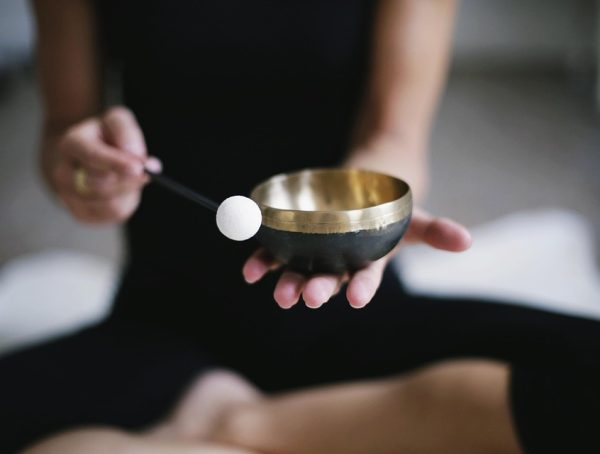Mindfulness Meditation Scripts for Stress Relief: Find Your Calm
In today’s fast-paced world, stress can often feel like a constant companion. Whether it’s work pressures, personal responsibilities, or societal anxieties, many of us find ourselves overwhelmed. Fortunately, one powerful tool we can leverage to counteract stress is mindfulness meditation. This ancient practice helps cultivate a sense of presence, calm, and clarity amidst the chaos. In this article, we’ll explore what mindfulness meditation is, share practical scripts to help you get started, and provide actionable steps to incorporate it into your daily routine.
What is Mindfulness Meditation?
Mindfulness meditation is the practice of focusing one’s awareness on the present moment while calmly acknowledging and accepting one’s feelings, thoughts, and bodily sensations. It allows us to step back from the whirlwind of our daily lives and observe our thoughts without judgment. By engaging fully with the present moment, we can cultivate a profound sense of peace and grounding.
Research has shown that mindfulness meditation can reduce stress, improve emotional regulation, and enhance overall well-being. The beauty of mindfulness lies in its simplicity—anyone can practice mindfulness meditation, regardless of their experience level or background.
Mindfulness Meditation Scripts
Here are three practical mindfulness meditation scripts designed to help you manage stress and find your calm.
Script 1: Mindful Breathing (5-10 minutes)
Preparation: Find a comfortable and quiet place to sit or lie down. Close your eyes if you feel comfortable doing so.
Script:
- Begin by taking a deep breath in through your nose, allowing your lungs to fill fully. Hold this breath for a moment, and then slowly exhale through your mouth.
- As you continue to breathe deeply, bring your attention to the sensation of your breath. Notice the cool air entering your nostrils and the warmth of your breath as you exhale.
- If your mind wanders, gently bring your focus back to your breath. You can silently say to yourself, "In" as you inhale and "Out" as you exhale.
- Continue this practice for several minutes, listening to the rhythm of your breath, allowing it to anchor you in the present.
- When you’re ready, slowly bring your awareness back to your surroundings. Wiggle your fingers and toes, and open your eyes when you feel ready.
Script 2: Body Scan (10-15 minutes)
Preparation: Lie down in a comfortable position, preferably on your back, with your arms at your sides.
Script:
- Begin with a few deep breaths, inhaling through your nose and exhaling through your mouth. Allow your body to begin to relax.
- Shift your focus to your toes. Notice any sensations, tension, or relaxation in that area. With each breath, envision tension melting away.
- Gradually move your attention up through your feet, ankles, calves, knees, thighs, and so on, making your way up to the top of your head.
- As you focus on each body part, pause and observe how it feels. If you encounter tension, imagine breathing into that area and letting it go with your exhale.
- Once you reach the top of your head, take a moment to feel the overall sensations in your body. Acknowledge the connection between your mind and body before slowly bringing your awareness back to your surroundings.
Script 3: Loving-Kindness Meditation (10-15 minutes)
Preparation: Find a comfortable seated position. You can place your hand on your heart to create a sense of grounding.
Script:
- Take a deep breath and bring to mind someone you care about. Visualize this person and feel the warmth in your heart.
- Silently repeat the following phrases: "May you be happy. May you be healthy. May you be safe. May you live with ease."
- After a few moments, expand your circle of loving-kindness to include yourself. Repeat: "May I be happy. May I be healthy. May I be safe. May I live with ease."
- Next, extend this loving-kindness to others in your life—friends, family, and even those you might find challenging.
- Conclude by returning to your breath, feeling the warmth and compassion you’ve cultivated. Gently bring your awareness back to the present moment.
Action Steps to Incorporate Mindfulness Meditation
-
Set a Schedule: Choose a specific time each day for your mindfulness practice. Consistency is key, whether it’s morning, midday, or before bed.
-
Create a Dedicated Space: Whether it’s a tranquil corner in your living room, a quiet spot in your office, or even a bench in your garden, designate a place where you can meditate. Having a designated space helps signal your mind that it’s time to relax.
-
Start Small: If you’re new to meditation, start with just 5 minutes a day. As you become more comfortable, gradually increase the duration.
-
Utilize Apps or Online Resources: Consider using guided meditation apps like Headspace, Calm, or Insight Timer to help you through the process. These resources can provide structure and guidance as you learn.
-
Join a Community: Look for local or online meditation groups where you can connect with others. Sharing your experiences and learning from others can enhance your mindfulness journey.
- Reflect: After each session, take a few minutes to reflect on your experience. What did you notice? How did you feel? Journaling can be a great way to keep track of your progress and insights.
Closing Thoughts
Integrating mindfulness meditation into your life is a powerful way to combat stress and cultivate resilience. By dedicating just a short amount of time each day to nurturing your mental well-being, you can empower yourself to handle the challenges that life throws your way. Remember, mindfulness is a practice—give yourself grace and allow it to unfold naturally.
As you move forward on your mindfulness journey, remember this uplifting reminder:
"The greatest weapon against stress is our ability to choose one thought over another." – William James
If you enjoyed this article and would like more content on wellness, mindfulness, and stress relief, follow Kevin on Instagram (@KSteineman) for daily inspiration and tips!
You might also like
More from Meditation
The Role of Mantras in Transcendental Meditation: A Deep Dive
The Role of Mantras in Transcendental Meditation: A Deep Dive Transcendental Meditation (TM) has garnered a significant following across the globe, …
The Science Behind Meditation: Improving Mental Health Naturally
The Science Behind Meditation: Improving Mental Health Naturally In today's fast-paced world, the pursuit of mental wellness has become paramount. Thousands …
Understanding the 7 Types of Meditation for Beginners
Understanding the 7 Types of Meditation for Beginners: A Path to Inner Peace Meditation has become a popular practice in recent …


































